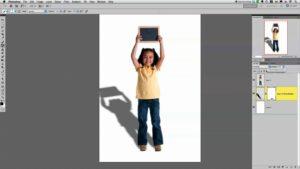Navigating the Digital Canvas: A Comprehensive Guide to Photoshop Tools and Toolbar Overview

Introduction:
Adobe Photoshop stands as a beacon in the realm of digital design, providing an extensive array of tools and features to bring artistic visions to life. At the heart of this creative powerhouse lies the toolbar, a multifaceted collection of tools that form the artist’s palette for crafting digital masterpieces. This comprehensive guide aims to unravel the intricacies of the Photoshop tools and toolbar, offering a detailed overview, explanations of each tool, and insights into how they synergize to empower users in their creative endeavors.
Chapter 1: Introduction to the Photoshop Interface
Before delving into the vast array of tools, understanding the Photoshop interface is paramount. This chapter will provide a comprehensive introduction to the workspace, highlighting the main components, panels, and navigation tools that collectively form the canvas upon which digital artistry takes shape.
Chapter 2: The Anatomy of the Toolbar
The toolbar in Photoshop serves as a gateway to a plethora of tools, each with its unique purpose and functionality. This chapter will dissect the anatomy of the toolbar, exploring its layout, customization options, and the categorization of tools based on their functions. A deeper understanding of the toolbar structure sets the stage for efficient and intuitive use of Photoshop tools.
Chapter 3: Selection Tools for Precision and Control
Selection tools are fundamental for isolating specific areas of an image or canvas for manipulation. This chapter will explore the various selection tools in Photoshop, including the Marquee, Lasso, Magic Wand, and Quick Selection tools. We’ll delve into selection techniques, refinement options, and how these tools contribute to precision in digital editing.
Chapter 4: The Paint and Brush Tools for Artistic Expression
Paint and brush tools are the artist’s virtual palette, enabling the application of colors and textures with finesse. This chapter will provide an in-depth overview of the Brush, Pencil, Eraser, and Paint Bucket tools. We’ll explore brush dynamics, customization options, and techniques for achieving expressive and nuanced strokes.
Chapter 5: Drawing and Vector Tools: Pen Tool Demystified
The Pen tool is a versatile and powerful instrument for creating paths, shapes, and vector-based designs. This chapter will demystify the Pen tool, guiding users through its functions, anchor point manipulation, and techniques for precision drawing. We’ll explore how the Pen tool integrates seamlessly with other vector tools in Photoshop.
Chapter 6: Text Tools: Crafting Typography in Photoshop
Typography plays a pivotal role in graphic design, and Photoshop provides an arsenal of text tools for creative expression. This chapter will delve into the Type tool, Vertical Type tool, and Horizontal Type Mask tool. We’ll explore text customization, formatting options, and how to integrate text seamlessly into digital compositions.
Chapter 7: The Shape Tools: Crafting Geometric and Custom Shapes
The Shape tools in Photoshop allow users to create geometric and custom shapes effortlessly. This chapter will explore the Rectangle, Rounded Rectangle, Ellipse, Polygon, and Custom Shape tools. We’ll discuss shape customization, transformation options, and how these tools contribute to the design of logos, icons, and intricate compositions.
Chapter 8: Retouching Tools: Perfecting Images with Precision
Retouching tools in Photoshop offer a range of options for enhancing and correcting images with precision. This chapter will delve into tools such as the Spot Healing Brush, Healing Brush, Patch Tool, Clone Stamp, and Content-Aware Move Tool. We’ll explore retouching techniques, non-destructive editing, and the art of seamlessly blending corrections into images.
Chapter 9: Painting and Blending: Artistic Techniques with Mixer Brush
The Mixer Brush tool in Photoshop transforms digital painting into a dynamic and textured experience. This chapter will guide users through the functionalities of the Mixer Brush, exploring brush settings, blending modes, and techniques for achieving realistic paint textures. We’ll discuss how the Mixer Brush enhances artistic expression on the digital canvas.
Chapter 10: Gradient and Blur Tools: Adding Depth and Dimension
Gradient and blur tools contribute to the visual depth and dimension of digital compositions. This chapter will explore the Gradient Tool, Paint Bucket Tool, and Blur Tool. We’ll discuss how gradients enhance backgrounds, the role of the Paint Bucket in filling areas with color, and the creative potential of the Blur Tool in achieving various effects.
Chapter 11: Zoom and Navigation Tools: Precision in Detail
Zoom and navigation tools are essential for navigating large canvases and scrutinizing details. This chapter will explore the Zoom Tool, Hand Tool, and the navigation options in Photoshop. We’ll discuss shortcuts, panning techniques, and zoom functionalities that contribute to precision and ease of navigation.
Chapter 12: Measurement and Analysis: Rulers and Eyedropper Tools
Rulers and eyedropper tools provide critical functionalities for precise measurement and color sampling. This chapter will delve into the Ruler Tool, Eyedropper Tool, and Color Sampler Tool. We’ll explore how these tools aid in analyzing images, ensuring accurate color reproduction, and maintaining consistency in design elements.
Chapter 13: 3D Tools: Crafting Three-Dimensional Designs
Photoshop’s 3D tools open up a realm of possibilities for creating three-dimensional designs. This chapter will explore the 3D Extrusion, 3D Object Rotate, and 3D Object Scale tools. We’ll discuss how to manipulate 3D objects, apply textures, and create visually stunning compositions that transcend the limitations of two-dimensional design.
Chapter 14: Video Editing Tools: Transforming Images into Motion
Photoshop’s video editing tools empower users to transform static images into dynamic motion graphics. This chapter will explore the Timeline, Frame Animation, and Video Timeline tools. We’ll discuss how to create animations, add keyframes, and leverage the video editing capabilities within Photoshop.
Chapter 15: Customization and Efficiency: Utilizing Presets and Workspaces
Efficiency in Photoshop is enhanced through customization options and predefined workspaces. This chapter will guide users through the process of creating custom presets, utilizing keyboard shortcuts, and optimizing the workspace layout. We’ll explore how tailoring Photoshop to individual preferences streamlines workflows and boosts productivity.
Conclusion:
The Photoshop tools and toolbar are the keystones of digital artistry, providing users with an extensive toolkit for creative expression. This comprehensive guide has unraveled the intricacies of each tool, offering insights into their functionalities and how they synergize to empower users in their artistic endeavors. Whether you’re a novice exploring the vast world of digital design or a seasoned professional seeking to master new techniques, may this guide serve as a valuable resource on your creative journey in the dynamic and boundless realm of Adobe Photoshop.







